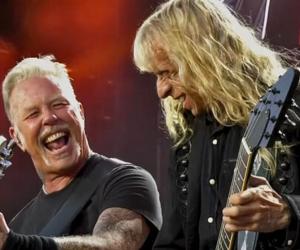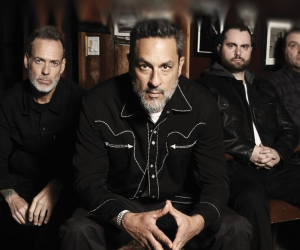Fender Stratocaster
Due to its single coil pick ups, the Stratocaster is often blamed for having a whiny tone. Big brother of the Telecaster, the Strat has been used by Eric Clapton (who used pretty much everything else because he is a guitar whore), Jeff Beck, Billy Corgan (The Smashing Pumpkins) and George Harrison (The Beatles) to name a few. Leo Fender will forever known as the guitar maker that didn’t play guitar, and the Stratocaster will forever be known as the guitar played by Jimmy Hendrix.
Gibson Les Paul
This solid body, P-90 loaded, heavyweight of the world was a flunk when it was first released in 1952, and by 1961 had morphed into that we all know as the Gibson SG. It was re-released in its original form in 1968 and has been going strong ever since. Slash (Guns N Roses), Jimmy Page (Led Zeppelin), Pete Townshend (The Who) and pretty much everyone else has played a Gibson Les Paul.
Ibanez RG Series
The mid-1980s was a popular time to the super-strat style body shape, and one of the best of that style is the Ibanez RG Series. The Ibanez signature headstock is a sure sign that you’re about to be treated to some killer tone. Users include Dexter Holland (The Offspring), John Petrucci (Dream Theatre), Mick Thompson (Slipknot), Wes Borland (Limp Bizkit) and many, many, more.
Gibson Explorer
It’s hard to imagine someone playing jive on this guitar, but its from the right era. First released in 1958, the Explorer snuck its way into the metal scene in the 1980s after originally being quite an unpopular guitar. Used by Allen Collins (Lynyrd Skynyrd), James Hetfield (Metallica), Brendon Small (Dethklok) and Matt Heafy (Trivium) have all rocked the Explorer. Little known fact: The ‘hockey-stick’ style headstock was incorporated into the Explorer design by Grover Jackson, founder of Jackson Guitars.
Dean ML 79
One of the most bizarre guitars to come out of the 1970s was Dean Guitars’ ML. Yet another guitar that was not very popular from the start, got a lease on life when Dimebag Darrell Abbott started ear-fucking us in the 1990s. The overall size of the guitar’s surface area, ‘string-through-body’ design and V-shaped neck add to the axe’s sustain. What a guitar. What a guitarist.







